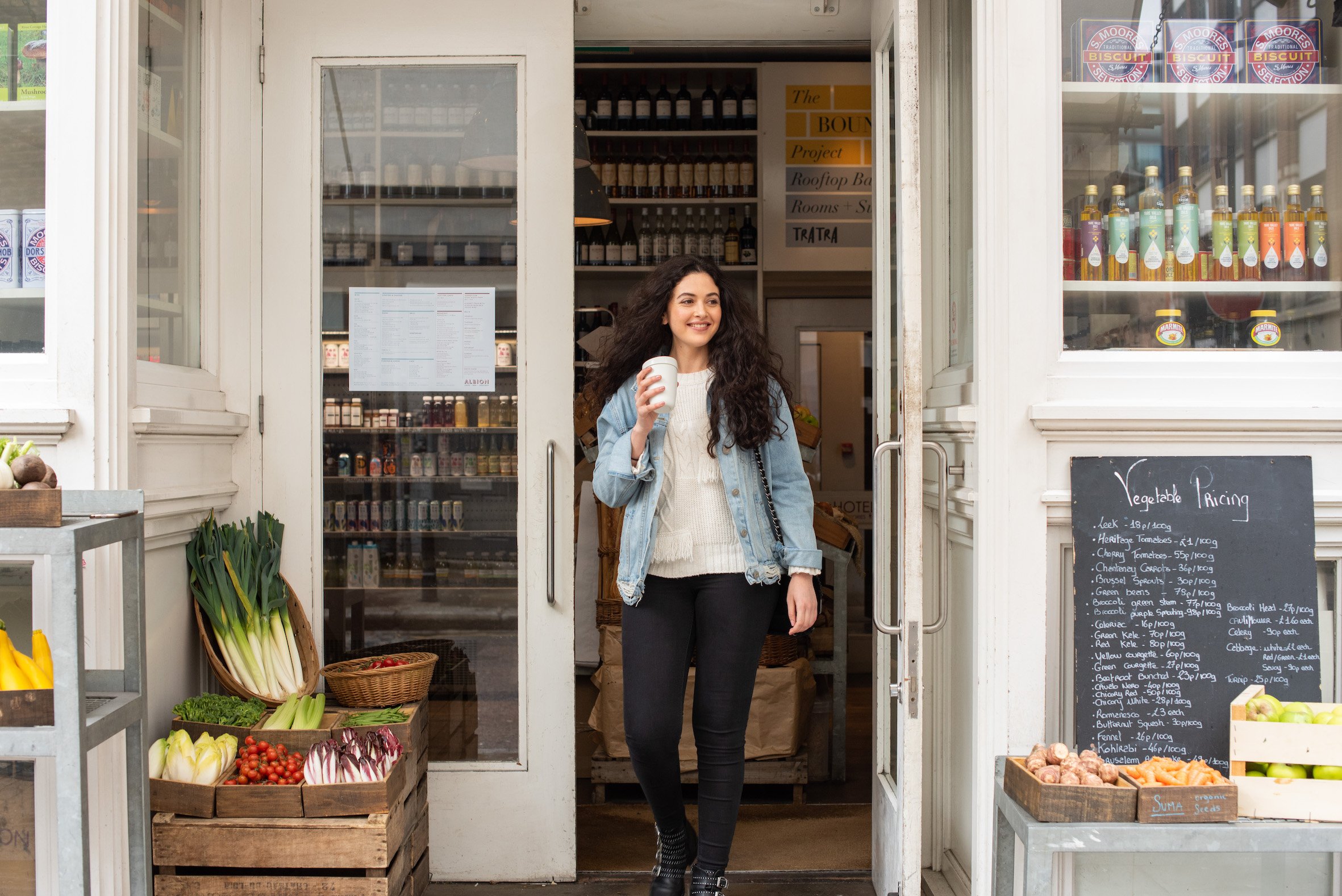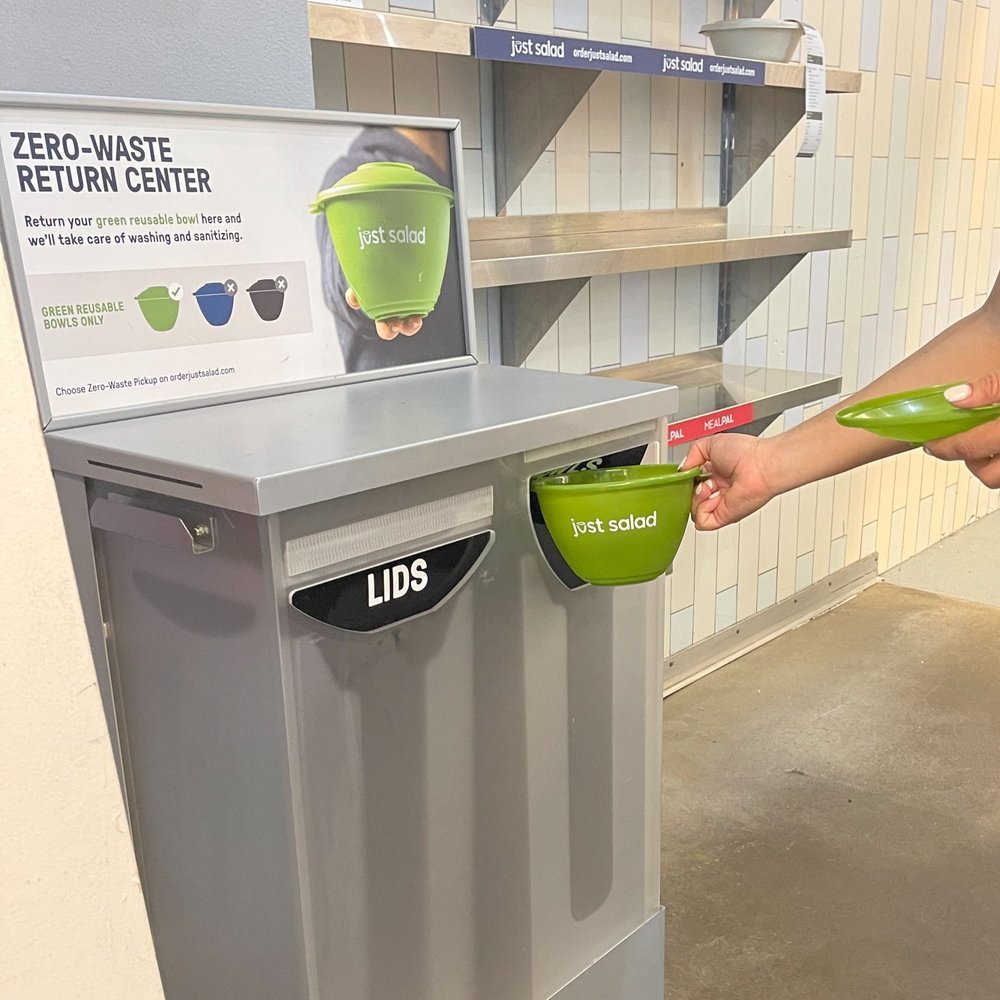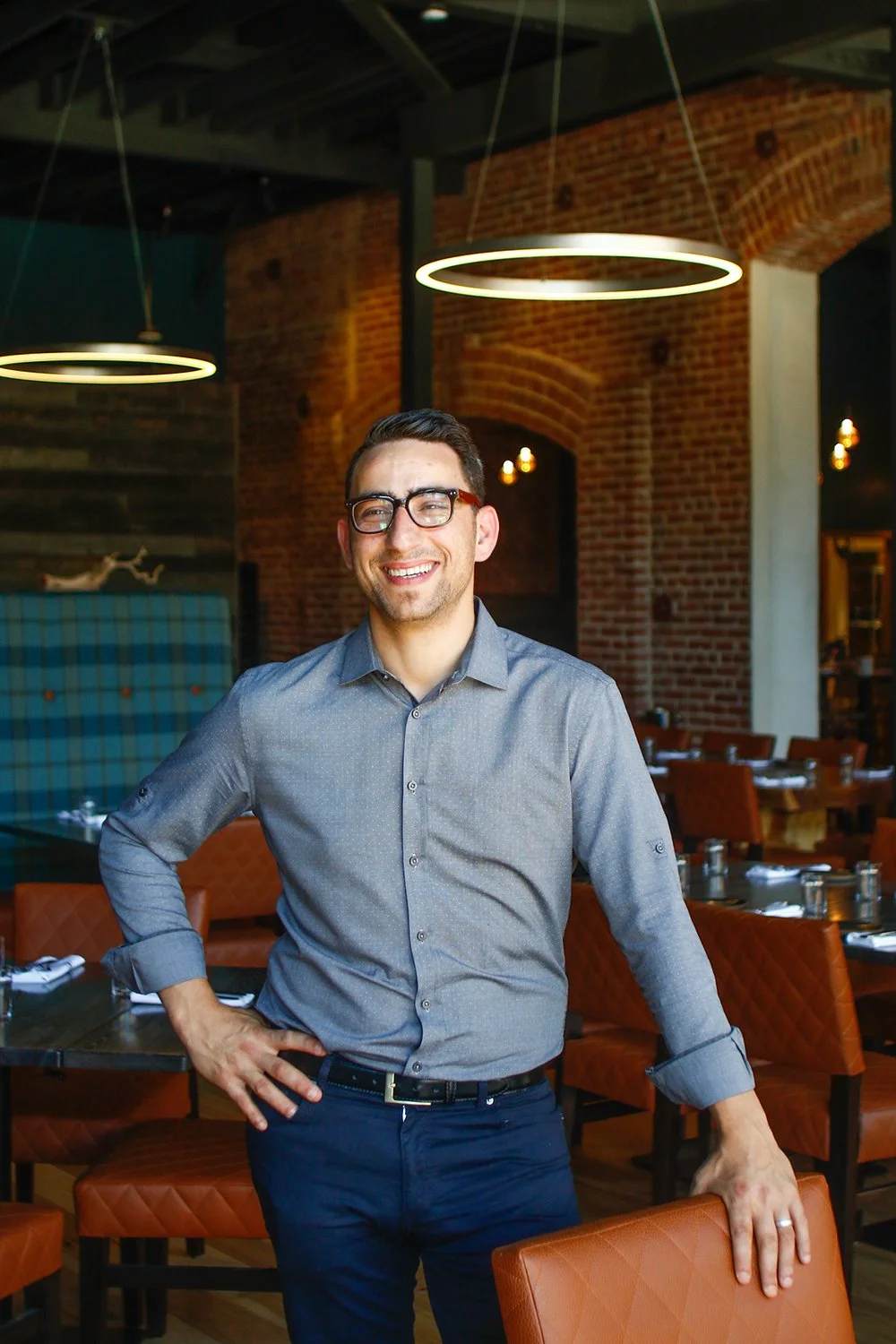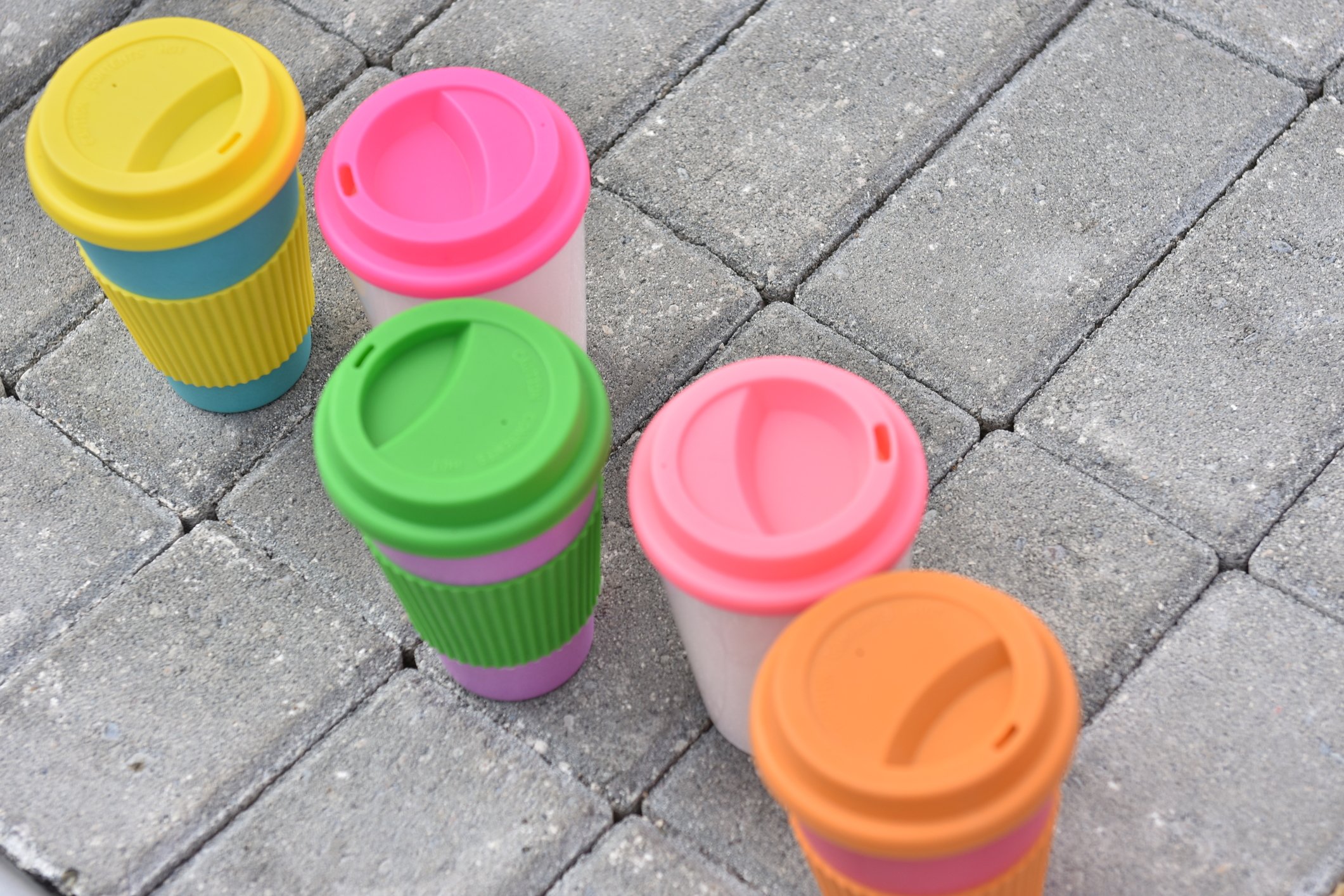Myth busting & removing barriers to scale
Too hard? Too expensive? Customers don’t want it? We hear these myths and barriers to scaling reuse all the time. And we are here to show that every challenge to making reuse work is surmountable and we have the means to overcome those barriers.
Media roundup
Articles, podcasts and other resources to show that reuse is do-able.
We are ready for the next step beyond pilots to ensure that reuse becomes systemic and widespread: we are ready for enduring projects.
To achieve systems-level change, how do we focus on what needs to be unlocked in order to facilitate a shift to a reuse economy?
A zero waste consulting firm wanted to monitor the environmental impacts of their clients. A Chart-Reuse case study.
A reuse service provider wanted to show stadiums the difference in carbon emissions between reusable cups and aluminum cans. A Chart-Reuse case study.
Counter-arguments to the top four myths about why reuse is not a viable solution.
Key findings from a new report on scaling reuse, plus more from Upstream’s Reuse Solutions Network.
How to effectively use LCAs as a tool to leverage and scale reuse systems.
To make a strong case for reuse and to build optimal systems, we need to use a systems approach in our LCAs.
We did not “ask” for our packaging to be disposable. Why should companies wait for consumers to “ask” for reusable products and packaging?
A significant body of evidence indicates that given the choice, people would choose reusables. Here’s a resource roundup—and another side of the coin.
A new report dives deep into the mechanics and potential of Outcomes-Based Waste Prevention (OBWP) to help solve plastic pollution.
How do you get customers to return to a system of reusable containers when they have been trained for years to throw them away when they are finished? Reuse businesses around the world are trying to answer this question.
Reuse requires rethinking how we deliver and consume. Many food businesses think switching to reusables will significantly increase labor costs, although the actual experiences do not support this view.
EPISODE 183: Lessons from the California school district that helped 300+ schools transition to reuse through a statewide grant program.
EPISODE 182: An exploration of behavior change science for reuse with Jen Carrigan and Katie Patrick.
photo credit: Cup Club
EPISODE 178: Christy Briggs of Lumen Field & the Seattle Seahawks and Mary McCarthy of Levy Restaurants on the opportunities and challenges posed by bringing reuse to the sports & entertainment sector.
Episode 161: What are the magic ingredients to scale reuse? Learn insights from the nonprofit, reuse business, policymaking, government funding, and corporate perspectives.
Episode 147: Reuse Seattle collaborators McKenna Morrigan and Moji Igun share the inspiring story of the coalition’s growing success since we first chatted with them.
Episode 142: Talking shop with Caroline Vanderlip of Re:Dish, a Reusies 2023 Most Innovative Company Winner and pioneer in scalable reuse infrastructure.
Episode 121: Emily Tipaldo of the U.S. Plastics Pact and Lauren Sweeney of DeliverZero discuss the collaborative opportunities to scale reuse made possible by the Pact’s Reuse Catalyst.
Episode 107: Brian Bauer of Algramo shows us how his company is transforming customers’ relationship to packaging with technology, elegantly designed systems and standardization across a number of big brands.
Upending the myths
From “reuse is too hard” to “reuse is too expensive” to “return rates are low” and “customers don’t want it”—we hear it all. And all these challenges can be surmounted!
“Reuse is too hard”
These restaurants, municipalities, and entrepreneurs have all found their way and are here to share their tips and insights.
-
![Video: myth busting barriers]()
Restaurants can do it
Reusables Win in San Francisco: A livestream sharing the perspectives of 3 foodservice operators from the Bay Area who switched to reuse—and aren’t looking back.
-
![podcast: Myth Busting Barriers to reuse]()
Cities can do it
A city-wide case study for reuse: Reuse Seattle walks us through the systemic approach the city has taken to build reuse into everyday life.
-
![podcast myth busting barriers]()
Entrepreneurs can do it
Zero waste that keeps on giving: Reuse business owner GL shares his story in starting a circular detergent vending system with a mission.
-
![video myth busting barriers]()
Nonprofits can do it
Tips to advocate for reuse in your community: Insights from ReusableLA’s leaders, who have been instrumental in passing multiple reuse and plastic reduction laws in the city and county.
“Reuse is too expensive”
While there’s undoubtedly an upfront investment in getting reuse off the ground, it pays off and then some over time—and in many instances, not a very long time at all.
-
![toolkit: myth busting barriers]()
Reuse vs Single-use: Economics
Transitioning from single-use to reuse creates significant benefits for business, including better customer experiences and insights, brand loyalty and cost savings.
-
![fact sheet: Myth Busting Barriers to reuse]()
Reuse saves money
Reusable foodware saves businesses money because reusables cost less over their lifetime.
-
![blog myth busting barriers]()
Reuse saves money. Now, how do we fund it?
A new report by Earth Action shows promise for funding reuse.
-
![blog myth busting barriers]()
Baking reuse into EPR & DRS
Well crafted Extended Producer Responsibility and Deposit Return System laws can—and should—fund reuse infrastructure.
“ROI and return rates are too low”
These case studies, success stories and insights show that with well thought out systems in place, reuse pays back and reusables come back
-
![graphic: myth busting barriers]()
Tomorrow's New Reuse Economy for Foodservice
An infographic showing that 193,000 jobs could be created and businesses would save $5 billion in no longer procuring disposables in a reuse economy.
-
![fact sheet: Myth Busting Barriers to reuse]()
5 Impact profiles of restaurants that switched to reuse
Fact sheets on 5 foodservice businesses that switched to reuse, all of which had a positive ROI.
-
![blog myth busting barriers]()
Incentivizing return in reuse systems
These businesses all had a 98% return rate on their reusables. Here’s how.
-
![case study myth busting barriers]()
Just Salad Case Study
In January 2021, Just Salad launched its BringBack Bowl pilot in New York City—with a 95% return rate.
-
![blog post colorful reusable cups myth busting breaking barriers]()
What makes an effective LCA for reuse?
To make a strong case for reuse and to build optimal systems, one key step we need to take is building material recovery rates into LCAs.
“Customers don’t want it”
Brands often use lack of consumer demand as an excuse, but plenty of evidence busts this myth, especially with growing public concern over plastic pollution.
-

Do consumers prefer reuse?
Why yes, they do! A robust body of research shows high consumer demand for reusable packaging.
-

Big brands can—and must—be changemakers
We did not “ask” for our packaging to be disposable. Why should companies wait for consumers to “ask” for reusable products and packaging?































Reuse is, first and foremost, a core economic transformation. Why? Because it allocates the true cost of how materials move through our society.